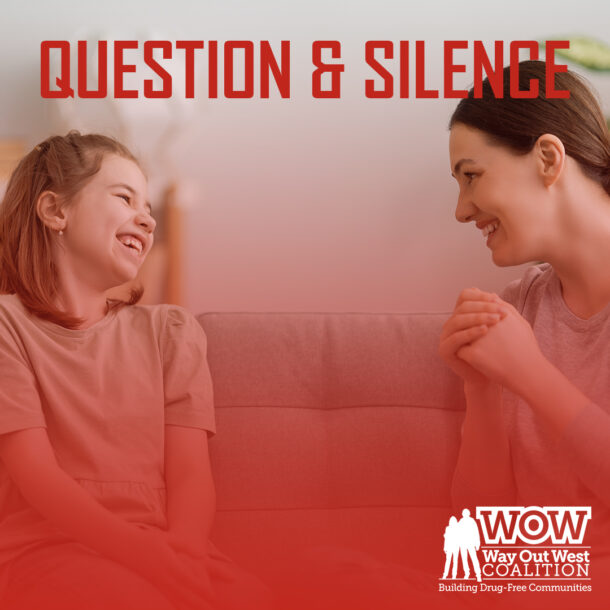Get in the Way Tip #8
Through the years, I have learned a very productive habit when helping people solve problems on their own. The habit is – Ask a great question and then shut up! People are more likely to do something when it is their idea. Asking a great question, followed by silence, allows the receiver time to think of the answer and make it their idea. All you did was ask a question that pointed their mind in a specific direction, allowing them time think of the solution all because you were silent.
A great question followed by silence is a handy parenting tool. You allow your child or grandchild to think critically and make their own POSITIVE decisions. When your idea becomes their idea, you have buy-in, and you create buy-in by asking great questions and silence. Using this technique with our children will take some practice.
In our primary prevention efforts as parents and grandparents, it is essential to develop great questions to GET IN THE WAY of youth substance use or help youth think through what they will do if they are in an environment where their peers are using alcohol or drugs.
I suggest doing this in a place with no distractions, so the focus is solely on the topic at hand. This will allow you to control the situation and, many times, deepens the conversation. Circumstances may not always allow this to happen, so be on the lookout for windows of opportunity. A window may be something like when my son and I are just finishing our exercise routine, during a walk, while unloading groceries, or finishing some yard work. I may begin with “I’ve been thinking,” or “this (insert here what triggered the reminder) reminds me of something I was thinking about.”

It is also essential to ask an open-ended question(s). (A question that cannot be answered with yes or no.) Once you ask them the question, DO NOT say a word. This may get too awkward/uncomfortable for both of you, especially if the silence is going for five minutes, but continue to be there in silence. Eventually, your child will answer the question you asked, even though it may only be a few words. Once they answer the question, continue the silence, and then process information and elaborate a little more on the decision. After this, you can continue to discuss with them and guide them to become the person you know they can become.
I would suggest having at least two questions prepared when you talk to your child about substance use. Having questions prepared ahead of time will allow you to be ready for the silence and take the emotions out of asking a less effective question. Every situation is different, but you can use great questions to help your child come to their own POSITIVE decision on using substances. Here are a few examples:
- I heard many teens are dabbing. What is dabbing?
- What is your plan when you are in a situation when others are using drugs or alcohol around you?
- How does using marijuana affect your grades in school?
- How does smoking or vaping hinder your performance in sports?
Author Joe Tracey, is Youth4Youth Program Director and member of the WOW Coalition; a prevention association that promotes safe and healthy choices and responds to problems caused by alcohol, marijuana and Rx abuse by implementing strategies to prevent and reduce youth substance use. For additional information visit http://www.wowcoalition.org or contact him at info@wow.coalition.org

